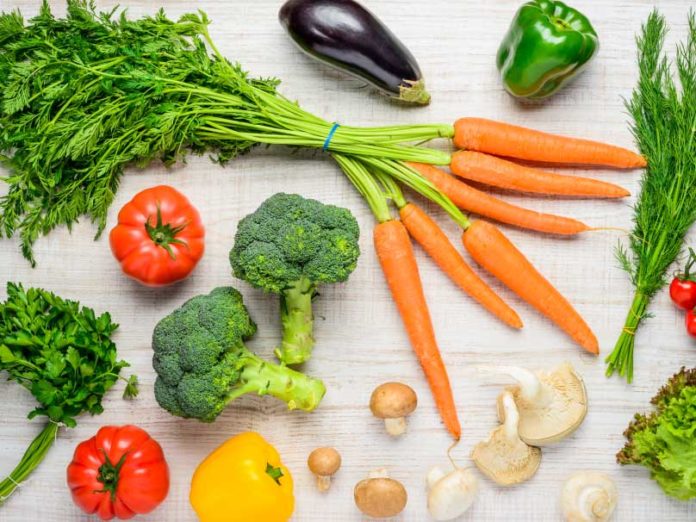Do you check food labels in the grocery store to make the best decisions on what to buy? If so, like most readers of my blog, you’re interested in doing everything possible to boost your wellness. You may keep up with the latest research, exercise regularly, and keep a close eye on your daily nutritional needs. But does all this health food jargon sometimes make your head spin?
FDA Food Labels
First, there are the FDA (Food and Drug Administration) labels you probably use every time you shop. Those came around relatively recently. According to the NIH, the first version of these labels, which include nutritional information, appeared in 1972. Then, in 1993 Congress revised them to include even more helpful nutritional detail. The most recent update to the FDA’s required food labels was in 2016. Food labels now have to also include, “new scientific information, including the link between diet and chronic diseases such as obesity and heart disease.”
Many people have given many hours of thought and work into developing the best labels for food, to help you in your quest to maintain wellness. Yet – there’s a health food vocabulary that isn’t always regulated and doesn’t appear on the FDA labels.
Marketing Labels
Words used on food packaging stem more from marketing than from oversight. Some of these terms are useful, but some are merely marketing ploys. You might see “free-range,” “gluten-free,” “all natural,” “organic,” “whole grain,” “multi grain,” “GMO,” “artisanal,” “superfood,” and more! You might feel like you’re not only swimming in health food jargon, you’re drowning in it.
But with a little help and some pertinent info, you will learn what such terms mean when applied to food. Plus, you’ll learn how to determine if they’re useful in making smart food choices. Equip yourself to sort out the marketing chaff from the useful vocabulary grain.
5 Health Food Terms to Watch
Organic
This is the granddad of health food terms, going all the way back to when health food shops first opened. It’s also a term that many consumers think has real meaning and isn’t just used by marketers to boost sales. They’re right! Organic is actually one of the words on this list that has to meet strict definition standards set by the USDA.
The Organic Trade Association summarizes these standards. They require that “products bearing the USDA organic label be grown and processed without the use of toxic and synthetic pesticides and fertilizers, genetic engineering, antibiotics, synthetic growth hormones, artificial flavors, colors, preservatives, sewage sludge and irradiation.”
Natural
Natural and all-natural are terms with a much looser standard. According to the FDA, foods labelled natural, or all-natural, cannot contain anything artificial or synthetic, including color dyes, added to a food that would not normally be in that food.
However, this does not cover how the food was produced. So, pesticides, irradiation, pasteurization or other manufacturing processes you probably wouldn’t think of as “natural” could have been used to bring you that “all natural”-labeled food.
Free-Range
You might have images of chickens scratching in the yard, or cattle grazing in pastures when you see eggs or meat labeled “free range.” This might not be the reality though. The USDA requires that animals are “allowed access to the outside” in order to use the free range label. There are no requirements that the animal actually goes outside, or any mandated length of time outdoors. What’s more, there are no requirements on the size of the outside space provided.
If this is important to you, there is a nonprofit organization, the Humane Farm Animal Care agency, that applies much stricter standards to ensure free range animals are actually pasture raised. And, if you want to know more about the health risks of eating factory farm raised animals, take a look at my previous article on pork.
Multi-Grain
If you’re following my blog, you’re probably well aware of the benefits of whole grains. Whole grain means the entire kernel of the grain is used. By contrast, in something like white flour, the outer shell, or husk, of the wheat kernel is stripped away and discarded. This means valuable nutrients and fiber are also discarded. So you already know it’s important to look for 100% whole grains. If a food just says “made with whole grain” or “made with whole wheat”, etc., it could still contain mostly white flour.
One way food companies try to sneak past your knowledge is by labeling things “multigrain.” This is an almost meaningless phrase. Multi-grain merely means they used more than one kind of grain in the product, whether whole or refined. You could still be eating mostly white flour.
Gluten-Free
There has been an avalanche of articles touting the benefits of a gluten-free diet. In turn, food companies produce a corresponding heap of gluten-free foods. But what does gluten-free actually mean? Gluten is a protein composite found in barley, rye, and wheat. A few people suffer from celiac disease, an autoimmune disorder. They must avoid gluten in their diet as a result. Many more have varying degrees of gluten intolerance.
Yet, it seems practically everyone has developed the idea that eating gluten-free is better for them. In fact, current research shows that a number of people who think they have digestive problems with gluten are mistaken. If you suffer from digestive issues, visit your doctor and take the time to understand the true cause. There are myriad possible reasons, including a lack of sufficient digestive enzymes.
And there’s solid evidence showing a gluten free diet can cause nutritional risks. According to the Mayo Clinic, a gluten-free diet risks low levels of many vitamins and other nutrients. So remember to approach your nutritional needs holistically and consider the right balance of nutrients for you.
As you can see, you need to be wary and do a little research on popular terms used to persuade you that the food product is good for you. You can of course always check back here where our team at Maxwell Medical will be keeping a close eye on the latest nutritional research.
—
Photo credit: Envato Elements









I can always count on my favorite Dr and friend to give the facts of about what’s good and what’s not.
Hi George,
Thank you for the kind words! Your vote of confidence is deeply appreciated.
My best to you and Bonnie!
Dr. M